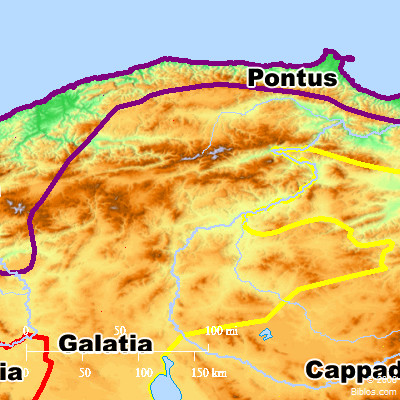Atlas  Tubal (Pontus) and surrounding area Maps Created using Biblemapper 3.0 Additional data from OpenBible.info Occurrences Isaiah 66:19 "I will set a sign among them, and I will send such as escape of them to the nations, to Tarshish, Pul, and Lud, who draw the bow, to Tubal and Javan, to the islands afar off, who have not heard my fame, neither have seen my glory; and they shall declare my glory among the nations.Ezekiel 27:13 Javan, Tubal, and Meshech, they were your traffickers; they traded the persons of men and vessels of brass for your merchandise. Ezekiel 38:2 Son of man, set your face toward Gog, of the land of Magog, the prince of Rosh, Meshech, and Tubal, and prophesy against him, Ezekiel 38:3 and say, Thus says the Lord Yahweh: Behold, I am against you, Gog, prince of Rosh, Meshech, and Tubal: Ezekiel 39:1 You, son of man, prophesy against Gog, and say, Thus says the Lord Yahweh: Behold, I am against you, Gog, prince of Rosh, Meshech, and Tubal: Ezekiel 39:6 I will send a fire on Magog, and on those who dwell securely in the islands; and they shall know that I am Yahweh. Encyclopedia TUBALtu'-bal (tubhal, tubhal; Septuagint Thobel, Codex Alexandrinus in Ezekiel 39:1, Thober): As the text stands, Tubal and Meshech are always coupled, except in Isaiah 66:19 (Massoretic Text) and Psalm 120:5. In the former passage Tubal is yoked with Javan; in the latter Meshech occurs in 120:5 and Kedar in 120:6. In Genesis 10:2 parallel, they are sons of Japheth. In Ezekiel (27:13) the two are mentioned as exporters of slaves and copper, as a warlike people of antiquity (32:26), in the army of Gog (38:2;; 39:1). Josephus identifies them with the Iberians and Cappadocians respectively; but they are most probably the Tibarenoi, and Moschoi, first mentioned in Herodotus iii.94 as belonging to the 19th satrapy of Darius, and again (vii.78) as furnishing a contingent to the host of Xerxes. Equally obvious is their identity with the Tabali and Muski of the Assyrian monuments, where the latter is mentioned as early as Tiglath-pileser I, and the former under Shalmaneser II; both are described as powerful military states. They appear together in Sargon's inscriptions; and during this entire period their territory must have extended much farther South and West than in Greek-Roman times. They are held (Winckler and Jeremias) to have been remnants of the old Hittite population which were gradually driven (probably by the Cimmerian invasion) to the mountainous district Southeast of the Black Sea. |



